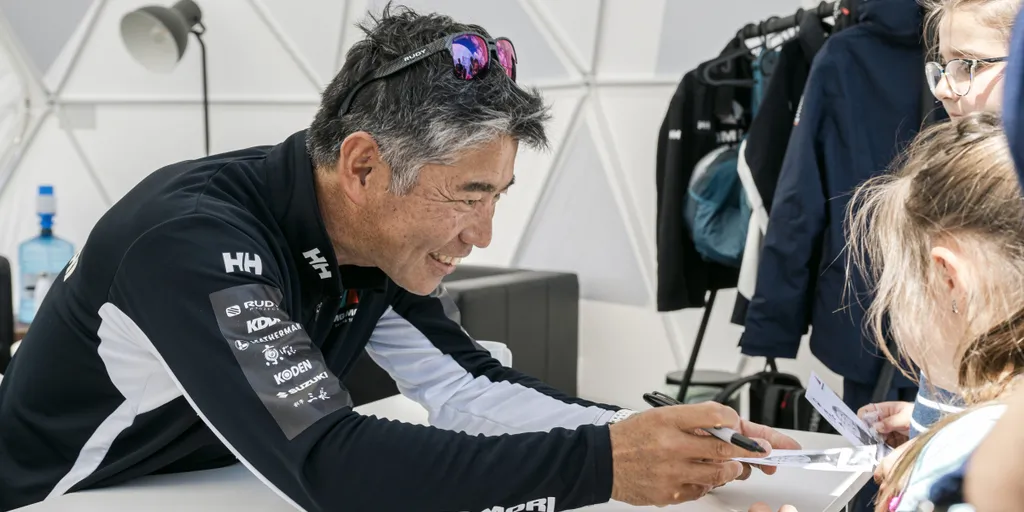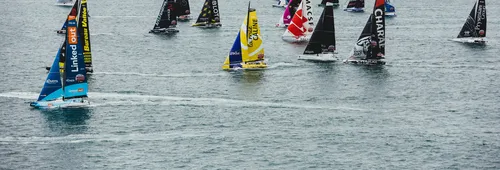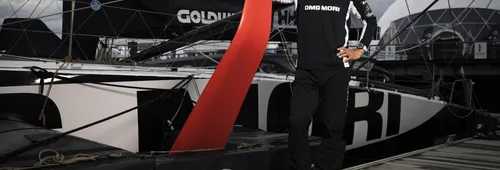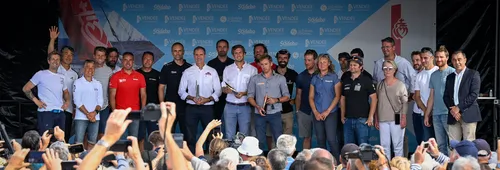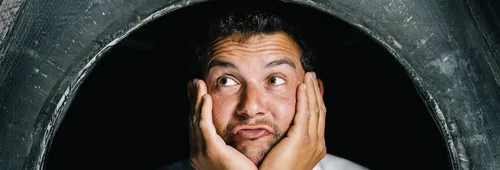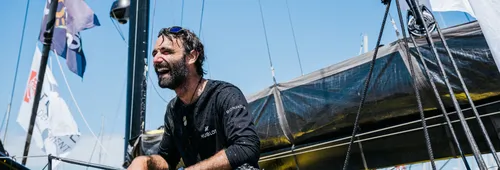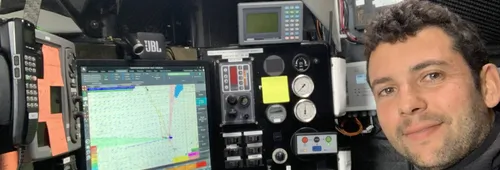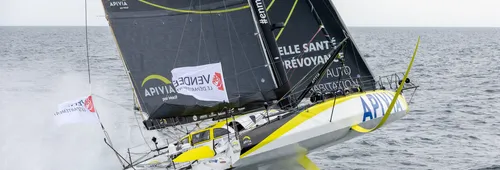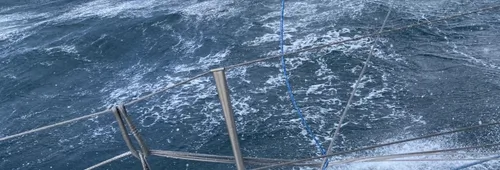Everyone loves to follow the sailors’ adventures but there must be a balance for the athlete. Chris Museler talks with Kojiro Shiraishi (DMG MORI GLOBAL ONE) and Laura Le Goff, general manager of the Vendee Globe, to get both sides of the equation.
Kojiro Shiraishi, Skipper, DMG MORI GLOBAL ONE
CM: You had a touching moment with your wishes for the bird that stopped for a rest. You could have easily not shared that scene with us and I’m sure there are many times where you keep the experience to yourself. It’s a part of that wonderful connection with the environment and the world that only you get to have.
How do you balance the demands of media and the race with your needs to focus and even enjoy your experience?
KS: It is of course hard to balance the demand of medias and racing but I try to communicate the most I can. The reason why I do so, is to use the media as much as possible to make offshore sailing more popular in Japan. I am the only one in the IMOCA class who can appeal to the Japanese public, so I try to do the most I can. For a single handed sailor, it is very demanding to do so, but this is also part of my job to send photos and videos of what I experience in these races. Especially to make all these wonderful races known in Japan.
I am not sailing alone, I have partners, sponsors, I have lots of people who encourage me. These videos and photos are my present to them. Show them what I experience, what kind of race I am doing. etc. I try to communicate the most I can but I also make sure the boat also goes forward.
CM: How do you use the human connection to your advantage while racing solo in the ocean?
KS: Human connection is the most important part in our sport because we are single handed, we need the support of as many people around us. For me I try to take care of my team. Team work is the most important aspect for me. The thought of trying to do your best for someone is always present. Alone we cannot do anything, especially myself, I am not a good racer, I need to surround myself with lots of people to be able to do what I do. This is why human connection is important to me.
In the sport we do, we are sometimes obliged to go rescue someone or being rescued by somebody. We need to always communicate to as many people as possible, to connect with beautiful people makes my life more fulfilled. It's not because I am doing single handed racing that I like being alone. I try to be surrounded with as many beautiful people so I can have a fulfilled life.
CM: Is it different when you are not racing but still alone?
KS: Of course it is different. When I am racing, I am risking all my life 24hrs a day against the nature. The amount of concentration you need is tremendous! When I am alone on land, I sometimes isolate myself. I do this to relax and to reflect on myself. Nowadays it is hard for us to be in a world that is not connected with all the phones, IT that surrounds us. At sea, or even on land I try to take time to reflect on myself to understand myself deeply.
CM: Do you ever take off alone, shut off the phone and spend time in solitude? And what's the difference between solitude and being alone?
KS: On land, with all my sponsor meetings and friends meetings, I do not have much time I spend alone. But sometimes, I try to go golfing alone. This is where I shutdown with the outside world. This is a break from the everyday life.
The difference between solitude and being alone is the difference between your true self and the reality. If you are true to yourself, you don't have any problems you go on and life follows. But if you are not true to yourself, you don't like what you are doing, then this is where there is a gap from reality and you feel the solitude in yourself. You can be surrounded by many people and still feel solitude. In mega cities you usually find people like that. When I do zen alone, I am alone but my life is fulfilled with positive images and makes me a happier person.
CM: Maybe that’s the question: What are the rewards of being truly alone??
KS: The best thing about being alone is to have time to reflect on myself. All the answers are within yourself. Your own self is creating the reality you are in. Your real self, your true feelings, what you are thinking and what you are doing, it is important that everything needs to align. If one of these is not right, you feel emotions, you are sad.
The way I try to get all these aligned is by practicing zen, by doing yoga, by walking alone, to try to dig deeper in myself to find my true self and align all my feelings towards one direction.
